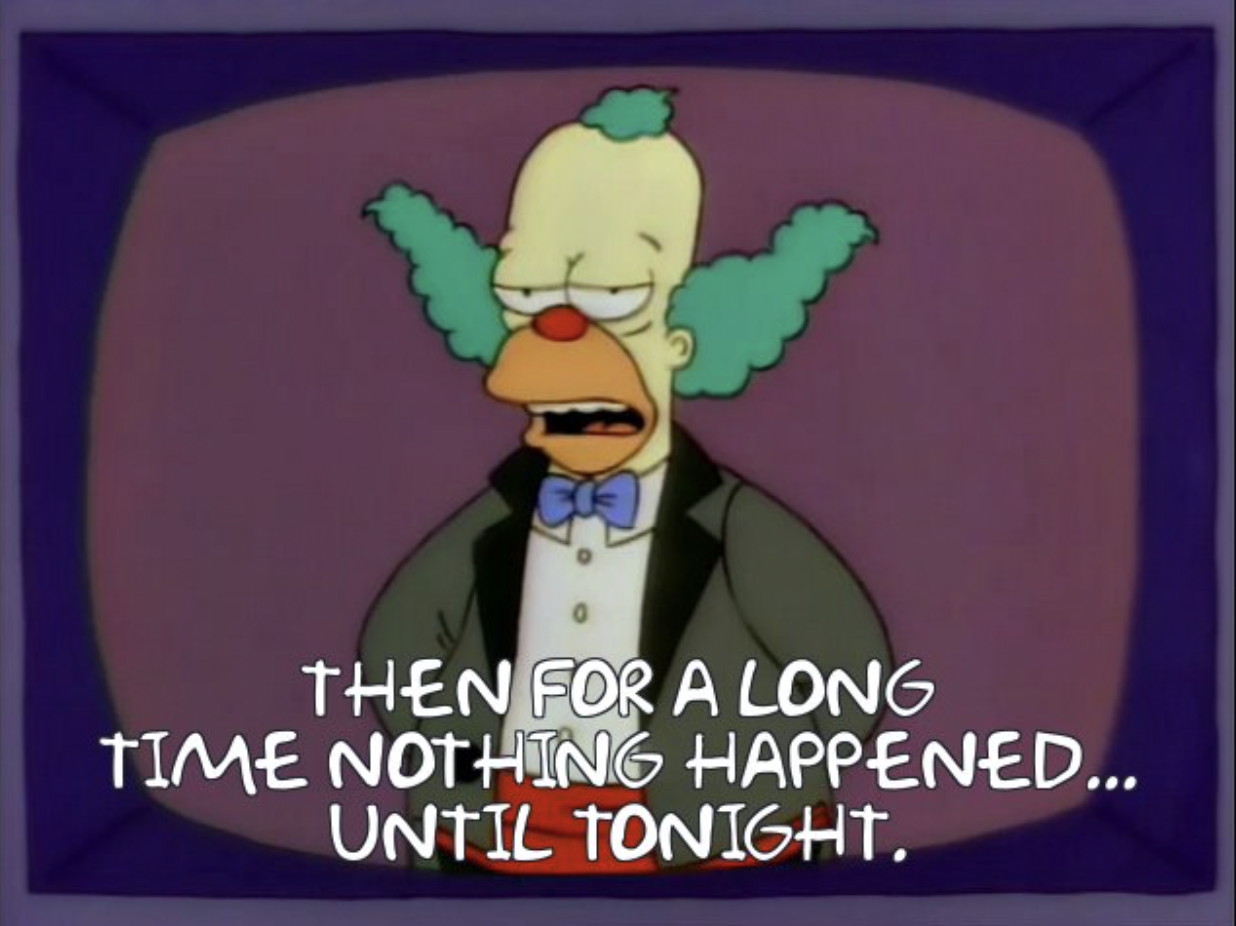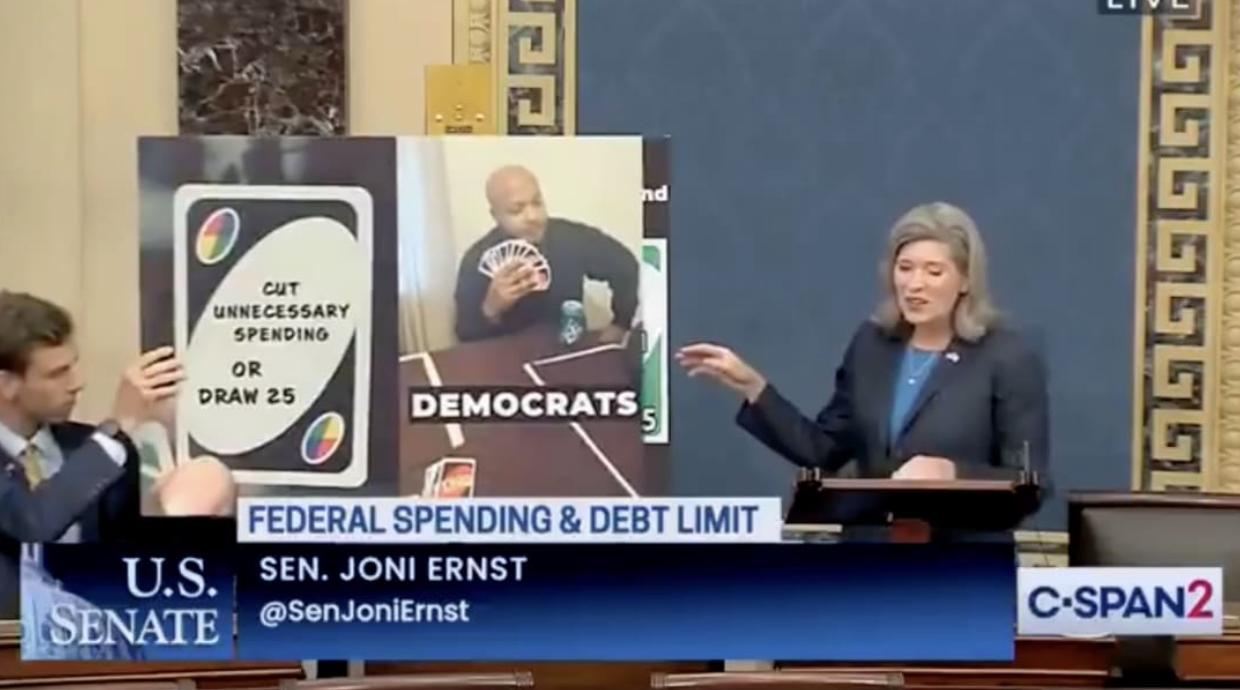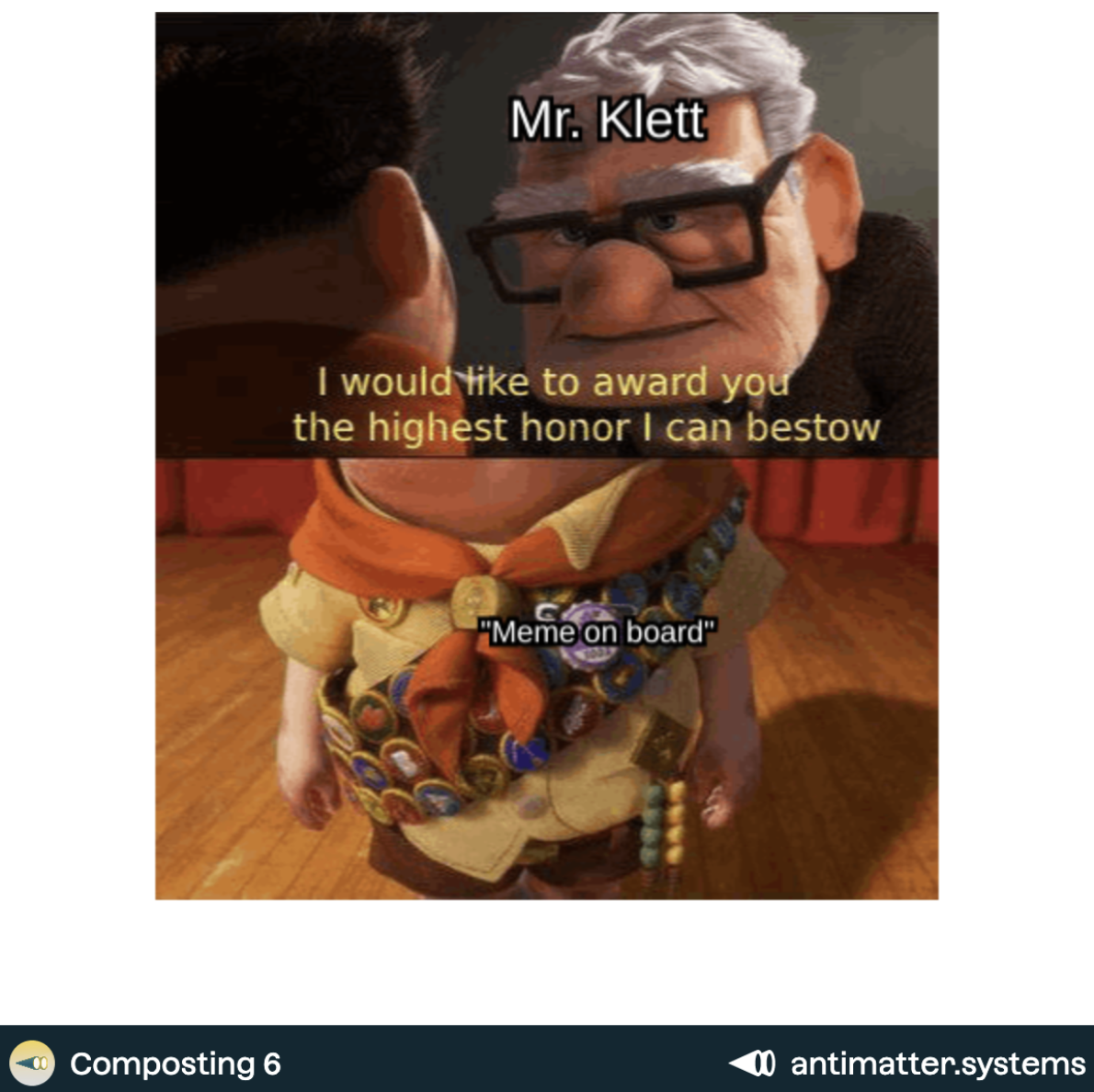From a teacher's desk: Using Antimatter in an English classroom
The first time I ever used memes in the classroom was about 10 years ago when I was student teaching. Students were reading To Kill a Mockingbird, so I showed them some of the demotivational memes that had been popular, such as this one from 2001:

But demotivation doesn’t go well with the novel, so I tasked those students with finding an inspirational quote from the story to then pair with an image that evoked a similar emotion. They printed their creations, and we had a gallery walk in the library computer lab to display all of them.

Once I started working full-time, I’d reference memes, and in the past three or four years I would start the school year with a slideshow with some education-related memes (here’s a personal favorite). However, sometime in the fall of 2021, I saw news of Iowa’s US Senator Joni Ernst using a meme as a visual aid during a speech on the floor of the Senate.

One of the classes I teach is a concurrent enrollment college composition course, and we read Jay Heinrichs’ book Thank You for Arguing that focuses on rhetoric. Her visual aid got me thinking about memes as a form of political discourse. It was by no means the first time it had occurred, and it just seems like it’s a trend of politicians adapting their message for the popular medium of the day. This provided a great way to explore how memes are used as a means of political discourse, which shaped a major research paper for students that fall. Students wrote a research essay about memes and politics that allowed them to explore the topic in more depth.
Discovering Antimatter
A year later, I somehow became aware of Antimatter (I’m pretty sure it was a Reddit post--hello, r/teachermemes). I checked the site out and totally got busy with grading and teaching and forgot about it then filed it away. However, a few weeks—maybe months—later, I saw another mention of it and thought it would be an interesting experiment for my concurrent enrollment college composition class.
I used some of the guidance Antimatter provided on a blog post about How (and how not) to use memes in the classroom. Matthew Blackman’s advice was a good starting point for how to get my students creating quality memes focused on reinforcing concepts from class. The times I have used Antimatter, I’ve tried to make it into a competition. I picked up some prizes in the form of laptop/water bottle stickers (I also requested some from our state universities, which were more than willing to send some my way).
Introducing Antimatter
I haven’t perfected the art of having students create high-quality memes, but it has been a fun path to start down. One piece of how-not-to-advice Matthew provides in his post is hard to break students of: “Memes should not be about the class but rather should be about the subject matter. This ensures that only high-quality memes are submitted.” Students like to comment on their situations, so I try to go every other Antimatter space to class content vs. class experience.
Which sometimes is easier to say than do. Students are really talented at making memes to capture their experiences, such as this one from last fall from one of my seniors:

To start this semester for my seniors in composition, I did a variation of a rhetoric and the zombie apocalypse from Georgia Public Broadcasting. Students took on the role of would-be survivors, and they had to argue their case as to why they should have access to a cure. At the conclusion of that event, I asked students to make memes imagining how zombies would use rhetoric:

Wrapping Up
As I said, it’s a work in progress for me, but I’m glad to have Antimatter to help support me on the way. Having a dedicated space to make memes for school is a great opportunity, and I’ll certainly keep exploring how students can use the medium to create and understand content.

